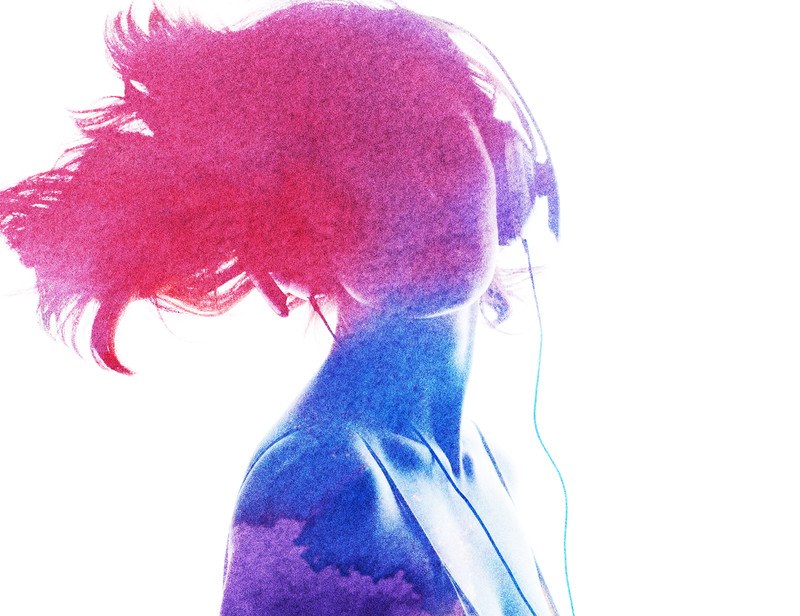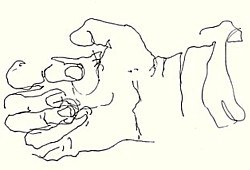Add Flavor to Mindfulness with Color and Music?
There has been much focus lately on the benefits of mindfulness, a practice that encourages focused attention and self-acceptance in the present moment. You may know about mindfulness through methods like meditation, prayer and yoga. But what might happen to your mindfulness practice if you added a little art or music?
Why Try Mindfulness?
Why practice mindfulness in the first place? Research shows that mindfulness increases focus and can decrease symptoms related to stress, anxiety, fatigue, depression, chronic pain, sleep problems and high blood pressure. Baer informs us that mindfulness encourages people to focus on present thoughts and emotions in a way that is accepting and curious rather than judgmental. Being hypercritical of thoughts and emotions can cause us to push them away increasing stress and tension. We find ourselves saying things like, “Ugh! I shouldn’t feel this way!” It is better to acknowledge thoughts and feelings for what they are and begin the process of self-regulation. With mindfulness, we increase our present, personal and environmental awareness. We can then take the opportunity to curiously observe and honestly observe our inner experience, labeling what is happening, accepting it as it is and then releasing it with a prayer or meditative statement.
Artful Awareness
Therapeutic approaches like Mindfulness-Based Art Therapy (MBAT) have found similarities between creative and mindfulness practices. These two practices can be combined to enhance their effectiveness. Activities like drawing, playing an instrument, listening to music or writing poetry require single-task concentration that reflects the same sort of present-awareness needed to participate in mindfulness.
Consider this. When an artist draws her subject, she must observe it closely, recognizing the shape and position of the subject, noticing the folds and creases. She would not be likely to see these details if she were just observing that same thing in passing. With a mindful stance she can more adequately depict the subject of her art. The more the artist practices this type of art, the more she finds her ability to “see” improves. In learning to play music, the body and mind are fully engaged in the singular task of creating sound. The fingers are positioned, the body is postured and the mind is alert. The more the musician practices, the more natural his movements and the flow of music become.
When incorporating the arts into mindfulness practice, skill level in playing music or creating artwork is not the focus. The intention is to use the creative process to stay engaged and increase the focus on the present experience: what you see, think, hear and how you are inwardly responding. Use the art as an anchor to maintain present focus when the mind starts to wander.
So, what are some examples of ways you could incorporate creativity into your mindfulness practice?
- Try blind contour drawing. Choose a drawing utensil (marker, pencil, chalk, etc.) and a piece of paper. Find a subject in your environment and focus in on it. While your eyes trace the lines and shapes of the subject, move your drawing utensil in unison, drawing one contiguous line but WITHOUT looking at your paper. This exercise requires deep concentration. To process troubling emotions, try finding a subject that is related to the issue at hand. For example, if you are having a disagreement with a family member that is causing you distress, find a picture of that person and use this as the subject of your contour drawing. Allow yourself to be non-judgmentally present with any feelings that may arise. You might even try journaling after the exercise. Couples could practice present awareness with each other by creating a blind contour drawing of their partner.
Blind contour drawing of a hand
- Find time alone to play an instrument like the drums or the piano. Try closing your eyes while playing and improvising or playing by ear. As you do this, observe the changes in your bodily responses as well as what emotions or imagery come up for you during this creative experience.
- If you do not have access to an instrument or do not feel musically inclined, you can listen to music mindfully. Choose a particular song or genre of music to which you feel connected. Pay attention to the characteristics of the song: beat, changes in tempo, harmony, melody, etc. Notice how the visceral responses in your body and emotions respond. Identify the mood of the song and how this connects to your inner experience. If the song has lyrics, notice what words or verses stand out to you.
There are a myriad of ways that the arts can be used to engage your senses and keep you inspired to stay present. Be creative and find what works for you. As you develop a lifestyle of mindfulness, you will likely find a deeper understanding of yourself and a greater sense of the world around you.
If you are seeking a professional to help you to gain awareness and personal insight, please contact us at Fuller Life Family Therapy Institute.
Supervised by Dr. Amy Fuller, PhD, LMFT-S, LPC-S and Dr. Sheryl Corbit, EdD, ATR-BC, LPC-AT/S
References
Baer, R. A. (2003). Mindfulness training as a clinical intervention: A conceptual and empirical review. Clinical Psychology: Science and Practice, 10, 125–143. Retrieved from http://www.ecsa.ucl.ac.be/personnel/philippot/DocStudents/baer%202003%20mindfulness%20training%20as%20clinical%20intervention.pdf
Eckhardt, K. J. and Dinsmore, J. A. (2012). Mindful music listening as a potential treatment for depression. Journal of Creativity in Mental Health, 7, 176-186. Retrieved from http://www.tandfonline.com/doi/abs/10.1080/15401383.2012.685020
Grant, A. M., Langer, E. J., Falk, E. & Capodilupo, C. (2004). Mindful creativity: Drawing to draw distinctions. Creativity Research Journal, 16, 261-265. Retrieved from http://www.tandfonline.com/doi/abs/10.1080/10400419.2004.9651457
Monti, D. A., Peterson, C., Shakin Kunkel, E. J., Hauck, W. W., Pequignot, E., Rhodes, L., & Brainard, G. C. (2006). A randomized, controlled trial of Mindfulness-Based Art Therapy (MBAT) for women with cancer. Psycho-Oncology, 15, 363–373. Retrieved from http://www.mindfullart.com/wp-content/uploads/2014/10/Controlled-Triall-2005.pdf
Oyan, S. (2006). Mindfulness meditation: Creative musical performance through awareness. Retrieved from http://etd.lsu.edu/docs/available/etd-03312006-164516/unrestricted/Oyan_dis.pdf











